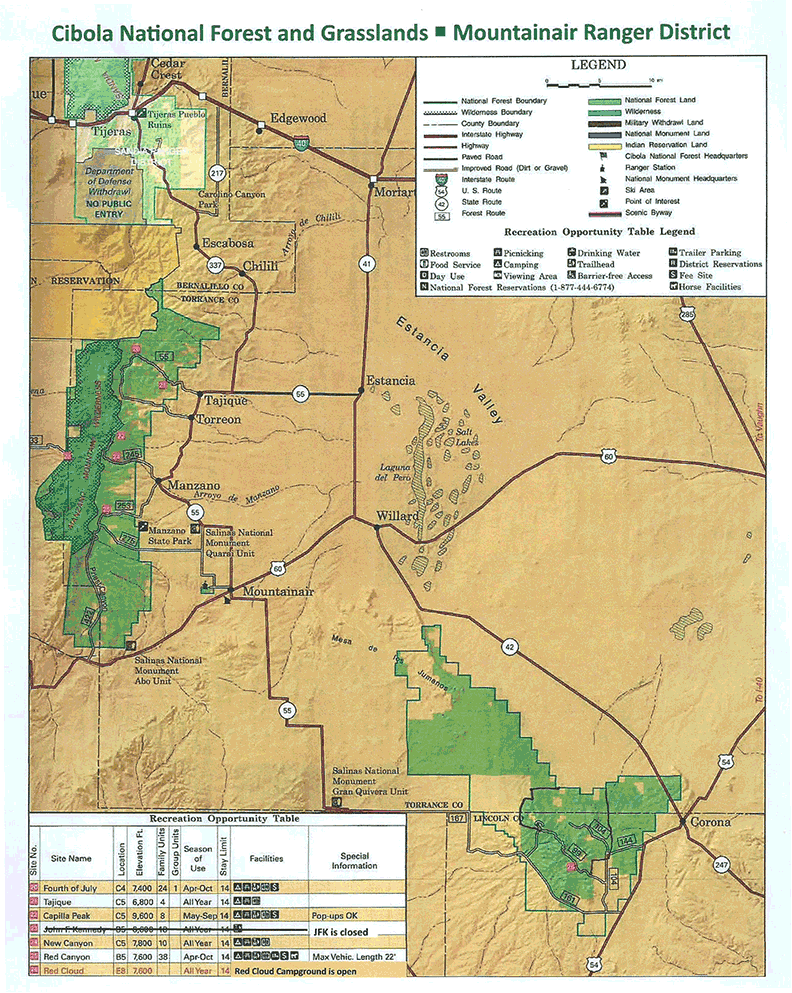
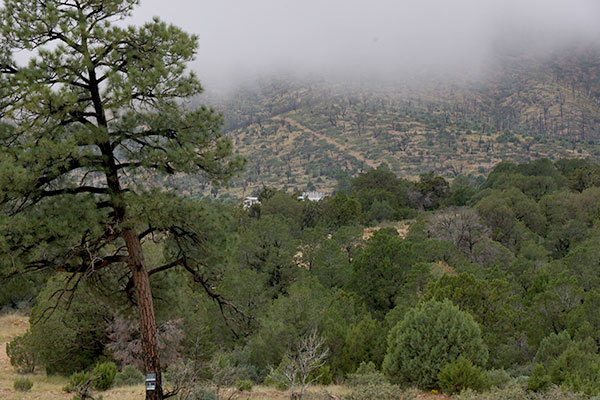

By Julie Carter, Cowgirl Sass & Savvy
Sitting at the kitchen table in the log built ranch house tucked up against the Gallinas Mountains in central New Mexico, Mike Sanchez wore the look of a man who didn’t get a lot of sleep and didn’t know what it was not to worry. The weight of the world had become part of his posture now and forever.
Mike and Loretta Sanchez have spent their entire married life (37 years) building their cattle herd to the point they could be proud of the uniform conformation, fertility and hardiness bred into them. It only took one “by my authority as the District Ranger” letter to undo those decades of planning and sacrifice and force the Sanchez family to find a new way of life.
The initial gut-wrenching shock has worn off over the course of the past year, but the financial and emotional impact to the grazing allotment owners in the U.S. Forest Service Mountainair District in Central New Mexico may never be far from the raw edge that it is still today. For some, it was death to life as they’d known it for decades.
,-Loretta-(wife)-and-Mike-Sanchez.jpg)
Frankie (son), Loretta (wife) and Mike Sanchez
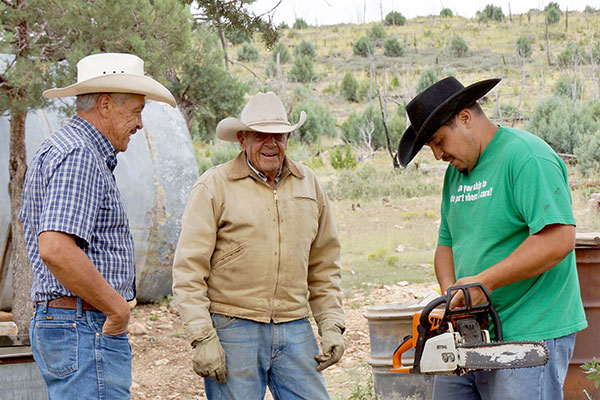
Sanchez, 3 generations Mike, Eddie, Frankie
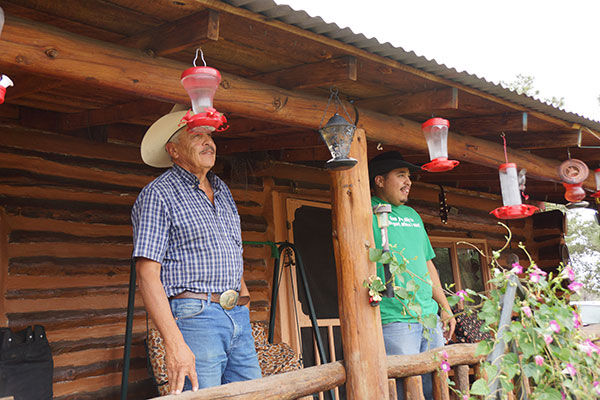
Mike and Frankie Sanchez
The Cibola Controversy
Locally it has been labeled the Cibola Controversy for its location in the Cibola National Forest. On June 11, 2013, Mountainair District Forest Ranger Karen Lessard issued an order to all 19 allotment owners in the district calling for suspension of livestock grazing for “not less than one year” and at that, return to grazing would be “graduated.”
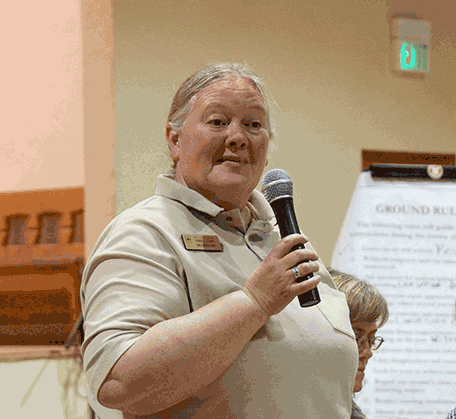
Karen Lessard
- District Forest Ranger Mountainair
The Mountainair District is made up of two separate mountain ranges. The Gallinas range is to the southeast of Mountainair, New Mexico, blanketing the county line between Lincoln and Torrance County. The Manzanos run north from Mountainair and are primarily in Torrance County with relatively small parts spilling over into Valencia and Bernalillo Counties. In miles, it would measure approximately 64 miles wide from east to west and 62 miles long from north to south.
The unilateral decision for complete livestock removal attributed to “drought” in such a vast and geographically diverse area made no logical sense and ultimately would be found to have no basis in documentable science.
Never before in the history of the Mountainair District or presumably in the state of New Mexico had a district-wide removal been ordered and certainly not without at least some individual area assessments.
The orders in Lessard’s letter were clear that there would be no discussion and that there was no appeal process available to the allotment owners. They were given approximately six weeks to completely vacate their allotments.
In response, New Mexico livestock organizations wrote to the Regional Forester addressing the District Rangers use of The Drought Monitor to make her decision. They pointed out the “nature of precipitation events in the Southwest being highly variable with respect to intensity, duration and scope” and that it was very unlikely that all allotments were equally affected. “An across the board livestock removal appears to be an arbitrary and capricious decision.”
But the order stood, the cattle were removed and the fight went to a higher level. Congressman Steve Pearce wrote to the Forest Service expressing his disappointment and disagreement with the order. He encouraged the Forest Service to “activate an existing Memorandum of Agreement and utilize Section 8 of the Public Rangelands Improvement Act to bring together the allotment owners, the Forest Service and experts at New Mexico State University to seek an equitable solution.
Regional Forester Cal Joyner defended the district’s actions but did admit that the collection of site-specific quantitative data on each allotment was impossible given the limited resources of the district. He said the Forest Service would “welcome the engagement and assistance” of the New Mexico Department of Agriculture (NMDA) and the Range Improvement Task Force (RITF) in assessing forage conditions on the allotments.
Six months after the removal of the livestock ~ after meetings, range assessments, letters, resolutions from both Torrance and Lincoln County Commissions opposing the order to remove, support from three Soil and Water Conservation Districts and intervention from Congressman Steve Pearce and Congresswoman Michelle Lujan Grisham ~ an authorization for the return of the livestock to the allotments was given.
The following stories are only a fraction of the ranchers with forest allotments in the Mountainair District where drought had not been absent but the monsoon rains quickly brought forgiveness as ranchers know it will do. Their science of survival has sustained them for decades and yet was so easily erased with an unyielding directive by an unyielding ranger.
“Wreaking financial and emotional havoc” are words used in the resolution presented by the ranchers to the county commissions in search of support for their plight. Those words on paper are better seen in the faces of the men who wear them today.
In the meantime, it rained
It rained two weeks after the order to remove the livestock was sent to allotment owners. And it rained again and again. Inches of rain in very forgiving ranch country. By the time the July 30 removal deadline rolled around there was a good stand of grass, tanks were full of water and there were muddy roads to navigate in moving out the cattle. But still no reprieve, no reversal, no discussion ever came from the forest service.
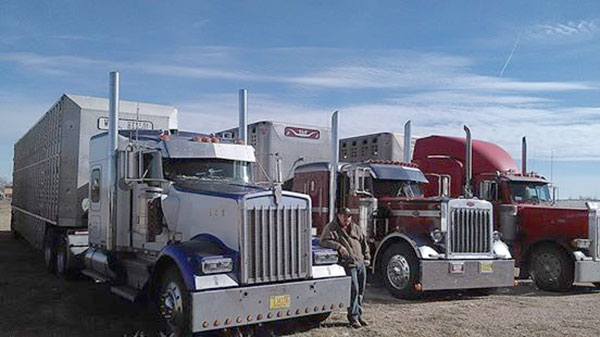
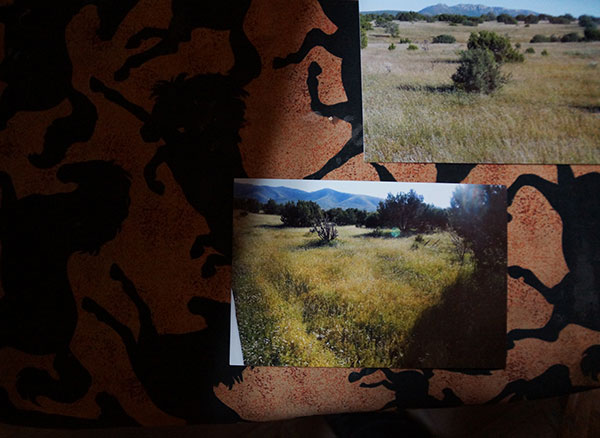
Photos of the grass on the Sanchez ranch the day they had to move the cattle off….
The Sanchez’s Gallinas Springs Ranch, home to four generations of the family, is comprised of 18,000 acres of U.S. Forest and 320 acres of private. The 244 head of cattle allowed by his grazing permit had already been substantially reduced during the previous two years of drought. The allotment grazing numbers represented 90 percent of Sanchez’s total operation.
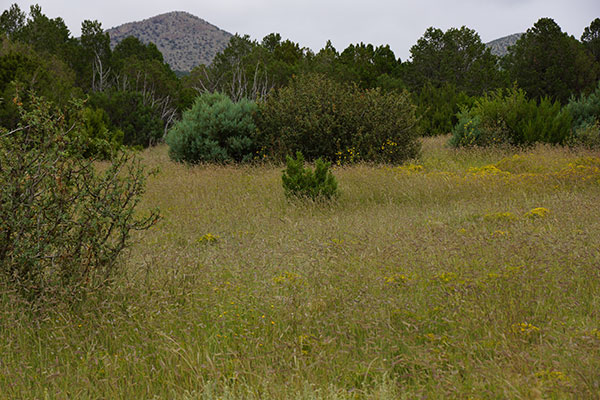
Sanchez land
“And if they’d told us to cut down more,” said Loretta, “we would have. But to just move them all off was the end of us. We didn’t have anywhere to go with the cattle. ”
Mike Sanchez added, “We had plenty of forage to wait for the rains that, if they were going to come, would come a little later in the summer. If they didn’t, we’d have taken the cattle off ourselves. This wasn’t our first drought.”
After many sleepless nights, anguishing over what to do, Mike Sanchez took the money he got for his cattle, sold in a low market flooded with cattle from drought stricken New Mexico ranches, and bought a semi-truck to begin hauling cattle. He had to make a living for his family and ranching as they knew it, was over.
“I am angry, really angry,” Mike said. “I’m very bitter. We’ve tried to restock a little but the money isn’t there. The prices are now three times higher to buy than what we sold for. It’s very depressing to go to the sale and see what cattle are bringing now, knowing what we had to sell ours for. And now I’m supposed to be friends with them (Forest Service) and act like nothing has happened?”
Financial devastation
Bob and Diane Hudgens have run cattle for 15 years on what was the Joe Atkinson permit in the Gallinas. By 2013 they had already voluntarily cut their numbers from the 245 allowed on the allotment to 120 due to drought conditions. Then the letter from Ranger Lessard came in the mail.
“There was no discussion, no warning, no opportunity for any input from us,” Bob said. “They (the Forest Service) had no value for our opinion or to hear the plans we had for surviving the drought. They never asked. It was very difficult to accept knowing that there was never any science involved in the decision on the part of the Forest Service. Ranchers assess their range every day. It’s how they survive.”
Because of the general drought in the state, there was no place to go with the cattle. “I did find a little farm land so I could keep a very few head, but most of those pairs went for $1100 and it will take three times that to replace them now.”
The Hudgens said this has been financially devastating to them. Had they been able to predict the surge in the cattle market, they would have done things differently. “We worked so hard to just maintain during the drought and then to get that letter with no recourse to us, it completely undid all we worked for.”
Robbing Peter to pay Paul
Jesus “Chewy” Baca has owned two grazing allotments, the Monte Largo and the Comanche, in the Manzano Mountain range for 50 and 60 years. “My grandmother had the Monte Largo before that,” Baca said. “My family has been ranching these mountains for a long time.”
Baca’s two allotments represent approximately 50,000 acres on the west face of the Manzanos, most of which have been designated as national wilderness area, making them accessible only by horse or afoot. No motorized anything allowed.
“I’ve never harvested all the grass off my allotments,” Baca explained. “There has always been enough from year to year, even in the drought. The rangers can’t see that from the fence line where they come ride along in a scooter and look over the fence for their assessments.”
Baca, like the majority of the allotment owners in the Mountainair district after the removal order, was forced to sell off the majority of his cattle in a down market. “I sold cows for a few hundred dollars each and now it costs $3,000 to put one back. Where I ran seven bulls before, I now have just one. It’s been bad, very bad. I’m robbing Peter to pay Paul trying to make it.”
In the fall of 2013, just two short months after he took all his cattle off the allotments, Baca said the NMSU Range Improvement Task Force (RITF) did a range assessment on the acreage. “They told me they’d never seen country managed any better than mine was.”
The RIFT, according to the NMSU website, is an “interdisciplinary team of range scientists, ecologists, wildlife experts, agricultural economists and livestock specialists that provides information for use in resolving resource management conflicts. RITF provides sound, scientific information that helps ranchers, land managers and policy makers make decisions about natural resource management and public land use.”
Baca said his problems with the U.S. Forest Service have been ongoing. “Vandalism has been a real problem. I’ve got fences cut in at least three places and they won’t do anything. I put over $5,000 into repairing a windmill because without it, the cattle had no water. They won’t even talk to me about reimbursement. They tell me for everything, ‘We have no resources.’ And then without any kind of assessment on the grass, they financially wreck my business.”
Baca said his real issue is with the current district ranger (Karen Lessard). “She comes from the east, from Maine. What does she know about ranching in this country? She doesn’t even look at it. It is very hard for me to understand how she can pass judgment from behind a desk.”
Recovery will take years
Rand Perkins cares for the DuBois Family allotment where the obliteration is not just financial, but in the years of building a herd with the desired genetic traits. “We had planned for drought,” he said. “We were still supplemental feeding and knew that if it didn’t rain when the monsoons usually come, we’d have to cut numbers again.”
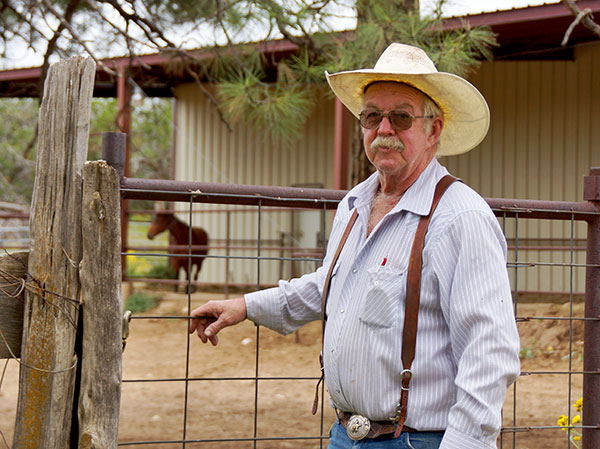
Rand Perkins
Adding salt to the financial fatal wounds inflicted by the forced sale of cattle, they gathered the cattle for removal off the allotment in mud and shin-deep grass. “It broke my heart,” said Rand. “It’ll take years to recover. A lot of years.”
The losses in dollars and cents quickly tally into the hundreds of thousands dollars. There is no price that can be put on the grievous wounds to the spirit of the families that will now try to hang on to a way of life, a family heritage. Five allotment owners willing to share their financial loss figures totaled over $911,000 dollars. Five of 19 total.
Retaliation fears
It’s not a new song for ranchers on public land allotments, but one that carries a haunting tune every time there’s a face-off between ranchers and government.
Not every allotment owner wanted to discuss what happened last year. For some, their attitude is that it is over, at least this time, and they have to move on and do the best they can. A few actually expressed concerns for retaliation from the local ranger office and wanted no mention of their situation or their names. And some even cited instances of direct threats of use of government power against them.
Others have been in continual combat with the local district before, after and since the removal orders were issued. The allotment owners formed an association, which as they found out, they were one of the few districts in the state that had not already done so.
The Mountainair Allotment Owners went as far as presenting a resolution to the Regional Office requested the removal of the district’s range management specialist for his “documented history of uncooperative attitude and hostile demeanor.” No action was ever taken concerning this request other than verbal promises to “do better.”
Investigation languishes
Both Lincoln and Torrance County Commissions passed resolutions opposing the action of the livestock removal. Lincoln County commissioners took it one step further and pushed for an internal U.S. Forest Service investigation. On Dec. 17, 2013, the commissioners voted unanimously to direct their county attorney to file a request for a congressional investigation which he did a month later.
Despite assurances of better communication about grazing allotment decisions, the Lincoln County Commission refuses to back off their investigation request. In a May 2014 commission meeting Commissioner Preston Stone expressed his concerns for the precedent that was set by the Mountainair District’s drastic actions.
“All of the Forest Service (districts) in the United States are watching,” he said. “They have not addressed the (alleged) malfeasance committed against 19 allotment owners and until they are forced to do so, they will continue to sweep it under the rug. We have called for an investigation and that’s what we want.”
Commissioner Mark Doth agreed. “They have swept it under the rug and said ‘we’ll do better from now on.’ It’s a slap on the hand but nobody ever addressed the damages that were done to the ranchers. If this were a court of law before a judge, that is what we would be discussing.”
To date, there has been no action on the part of the Forest Service in responding to the request.
In a letter to the county commission, Regional Forester Calvin N. Joyner stated it was the magnitude of the drought conditions that led to Ranger Lessard’s decision to order the removal of livestock. He also acknowledged that the forest staff had not in the past utilized the state’s agriculture department and the NMSU range task force for evaluation of range conditions. “This was due to a lack of knowledge and experience about this opportunity,” he wrote.
Joyner said that since last fall, “the Forest Supervisor, District Ranger and range personnel had been working closely with the task force (RITF) to review existing information and develop a mutual understanding of monitoring methods and process.”
However, this fall, at least one rancher reported that his scheduled assessment was done by the district and included none of those agencies, their methods or their expertise.
“Lack of knowledge and experience” as Joyner put it, is a lesson paid for on the backs of the Mountainair District allotment owners. An expensive if not devastating lesson. Words of accepted accountability won’t repair the financial damage and certainly never the emotional and generational ravages of one ranger’s signature on one line of one letter based on corrupted information with no science to support it.
Killed by a pen.
